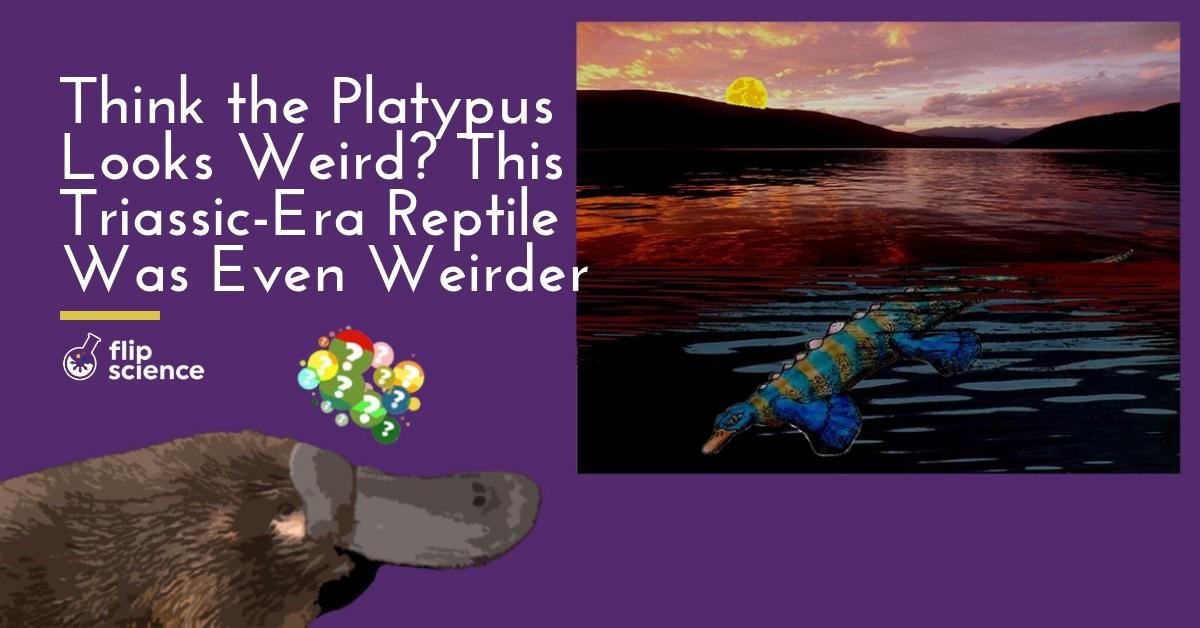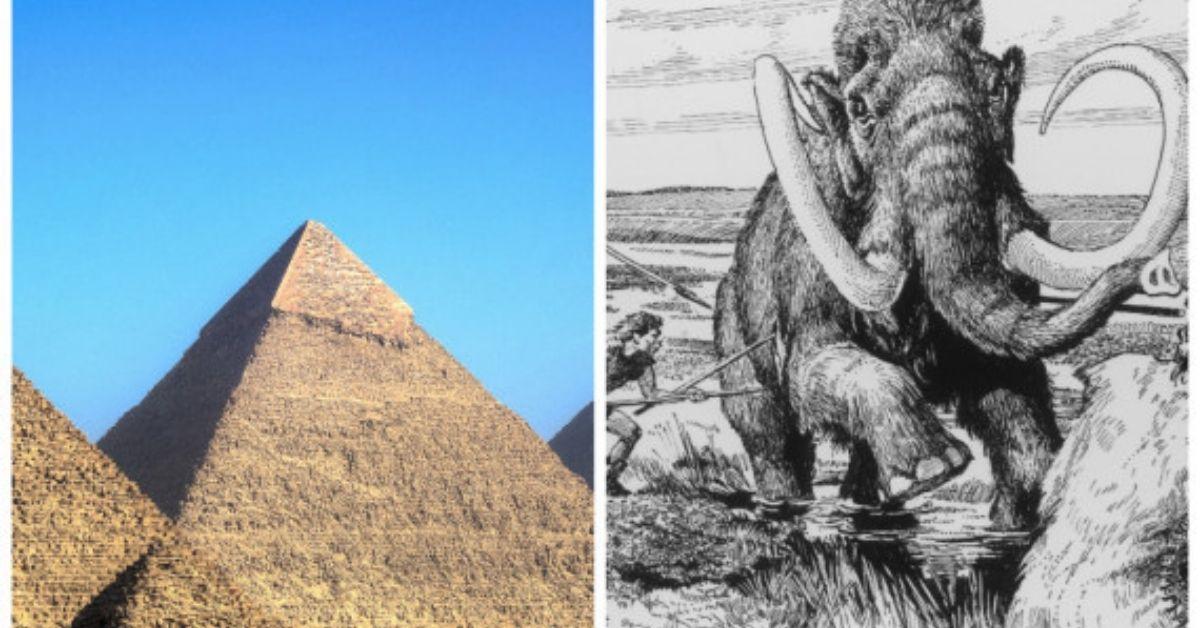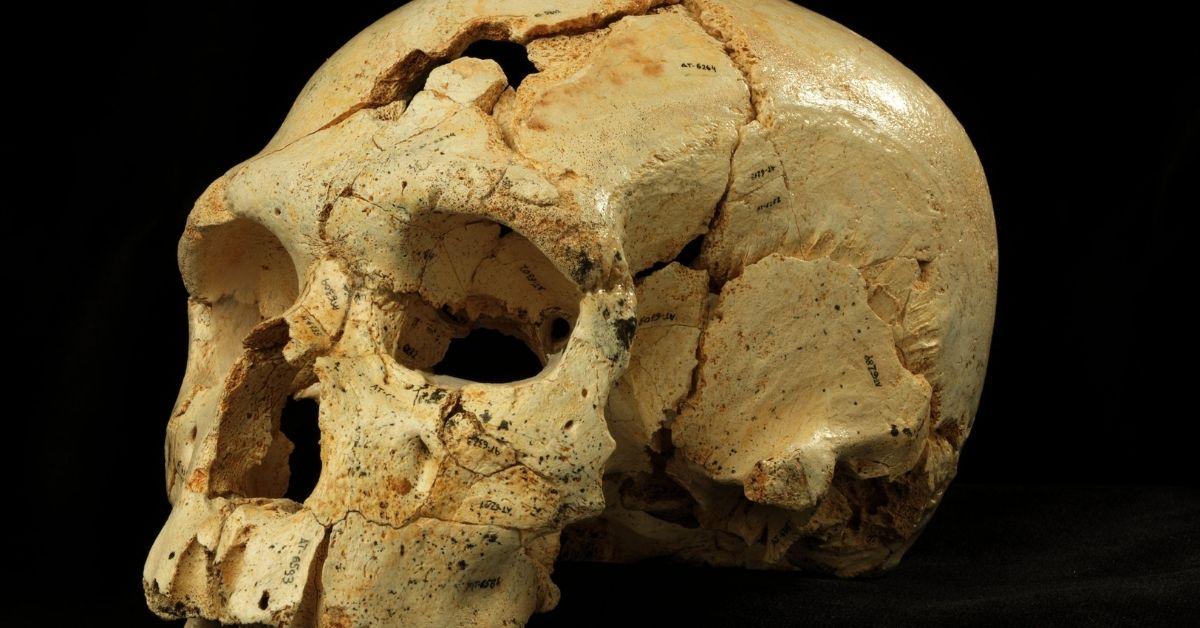• 250 million years ago, the platypus-looking Eretmorhipis carrolldongi swam in the waters of China.
• It had a comically undersized head with small eyes, and grew up to a little over two feet in length.
• Prior to this discovery, partial Eretmorphis fossils did not include its head.
Picture an ordinary-looking platypus (which some may understandably think is an oxymoron in itself). Stretch it by about half its length, double the size of its flippers, and give it a dinosaur-like tail. Oh, and shrink its head by about 75%. Lastly, turn back the geologic clock by about 250 million years, imagine a shallow sea in the place of China, and let this strange creature you’ve imagined swim happily in the water.
Congratulations — you’ve just met Eretmorhipis carrolldongi, arguably one of the strangest vertebrates from the lower Triassic period.
Duck-billed, doofy-looking diapsid
Eretmorhipis belongs to an order of extinct reptiles called Hupehsuchia, which were closely related to the fish-like ichthyosaurs. It was a diapsid, meaning it had two holes on each side of its skull located right behind its eye sockets. Scientists consider Eretmorhipis to be evidence of the early Triassic evolutionary boom.
As described in a recently published study, Eretmorhipis was a little over 2 feet (70 centimeters) long. It had a tail that was slightly longer than its stiff body, as well as four large flippers. It also had a row of bony plates running down its back.
When Eretmorhipis (meaning “oar fan” in Greek) was first named in 2015, scientists only knew it from fossils that didn’t include its head. Recently discovered remains, however, came with its comically small skull.
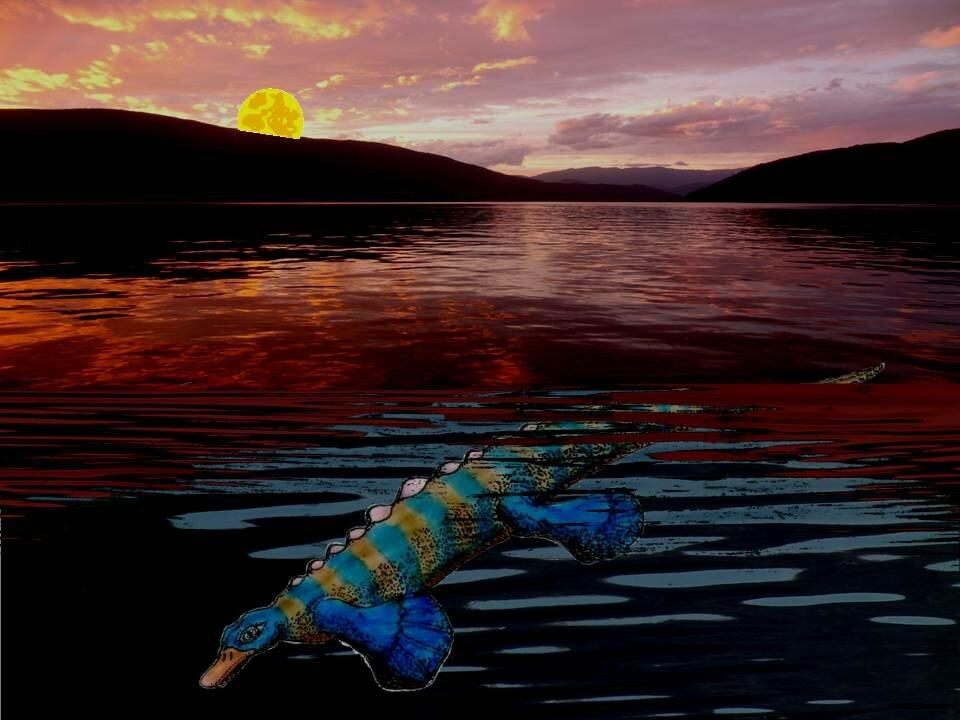
In fact, the study’s co-author, Prof. Ryosuke Motani from the University of California, called it a “very strange animal.”
“When I started thinking about the biology, I was really puzzled,” shared Motani.
Even stranger was the fact that Eretmorhipis‘ skull appears to have been designed to come with a cartilaginous bill, much like today’s platypus (complete with a large hole right in the middle of the bone).
Adept scooper, inept swimmer
The researchers believe that Eretmorhipis used its bill in a manner similar to its modern-day mammalian lookalike. Since it inhabited shallow waters, Eretmorhipis may have scooped up unlikely worms, shrimp, or other tiny invertebrates trapped in muddy deposits and lagoons.
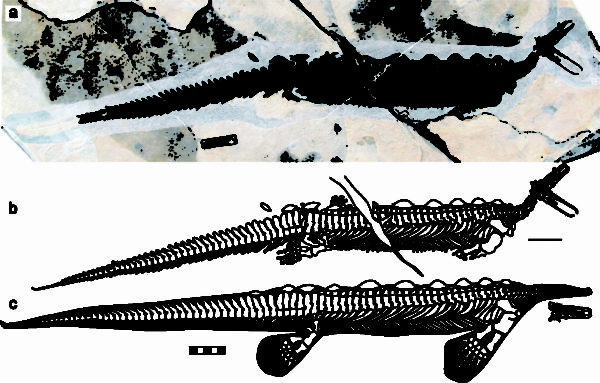
Its odd features were probably for the best, though, as its stiff body suggests that Mother Nature didn’t exactly design it to win any swimming medals. Additionally, its small head meant that it was likely almost blind and deaf. “It wouldn’t survive in the modern world,” said Motani, “but it didn’t have any rivals at the time.”
And in all honesty, it’s hard to picture anything that can trump this perplexing, prehistoric platypus-like paddler’s peculiarity.
Cover photo: National Geographic; Pixabay; Gianluca Danini
References
- https://phys.org/news/2019-01-reptile-platypus-early-triassic.html
- https://www.livescience.com/64577-triassic-platypus-like-reptile.html
- https://www.nature.com/articles/s41598-018-37754-6.pdf
Author: Mikael Angelo Francisco
Bitten by the science writing bug, Mikael has years of writing and editorial experience under his belt. As the editor-in-chief of FlipScience, Mikael has sworn to help make science more fun and interesting for geeky readers and casual audiences alike.

